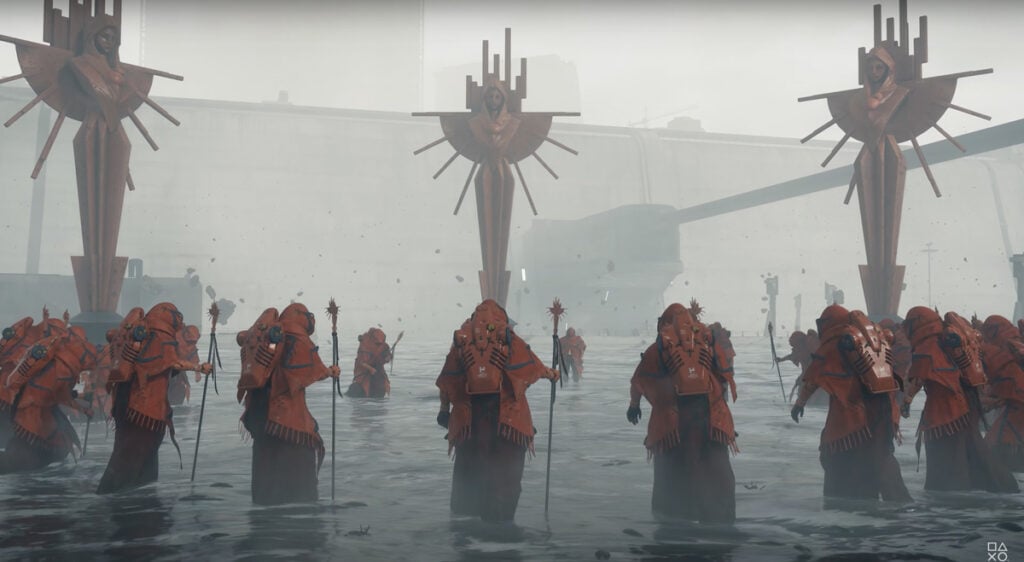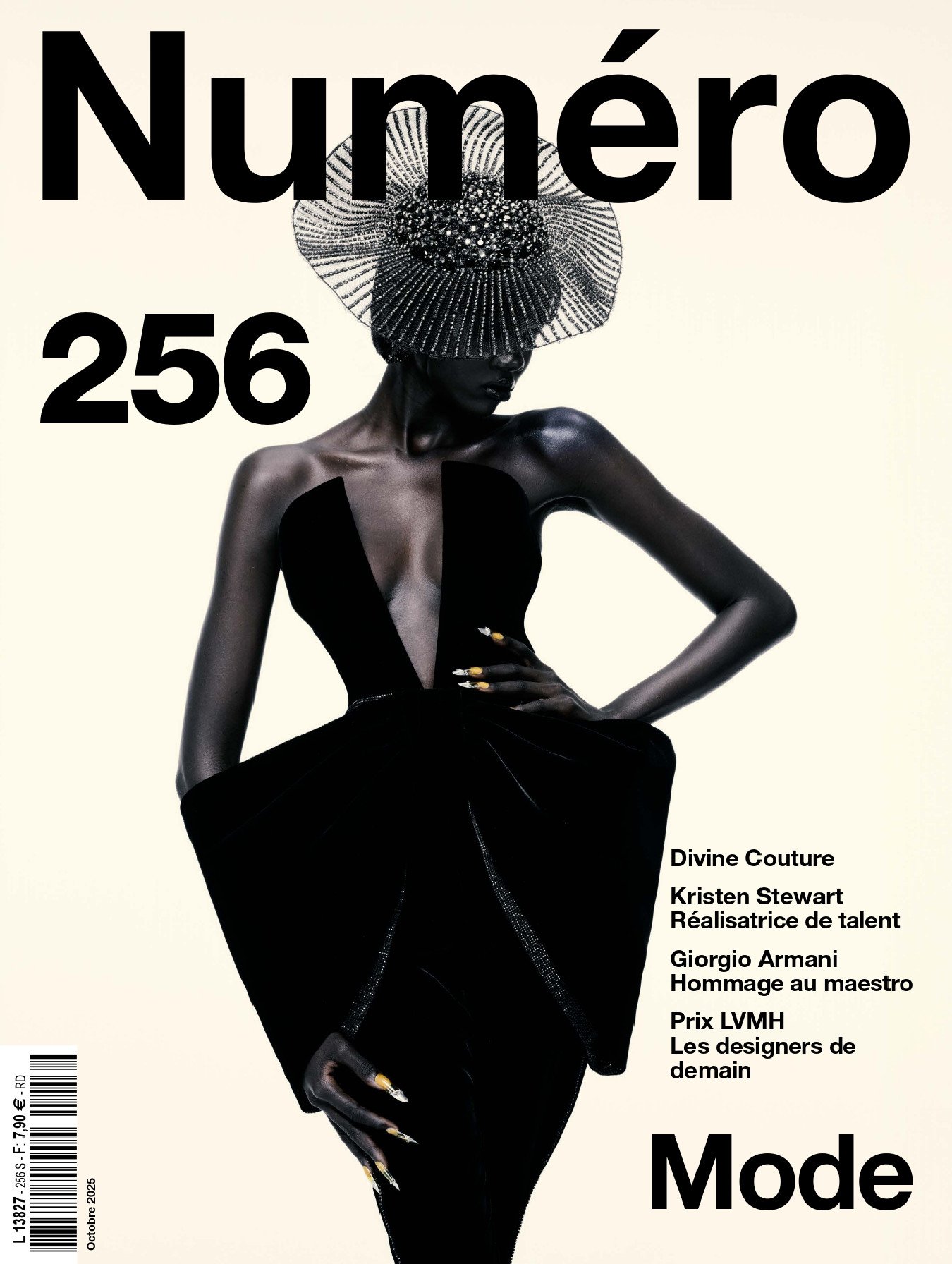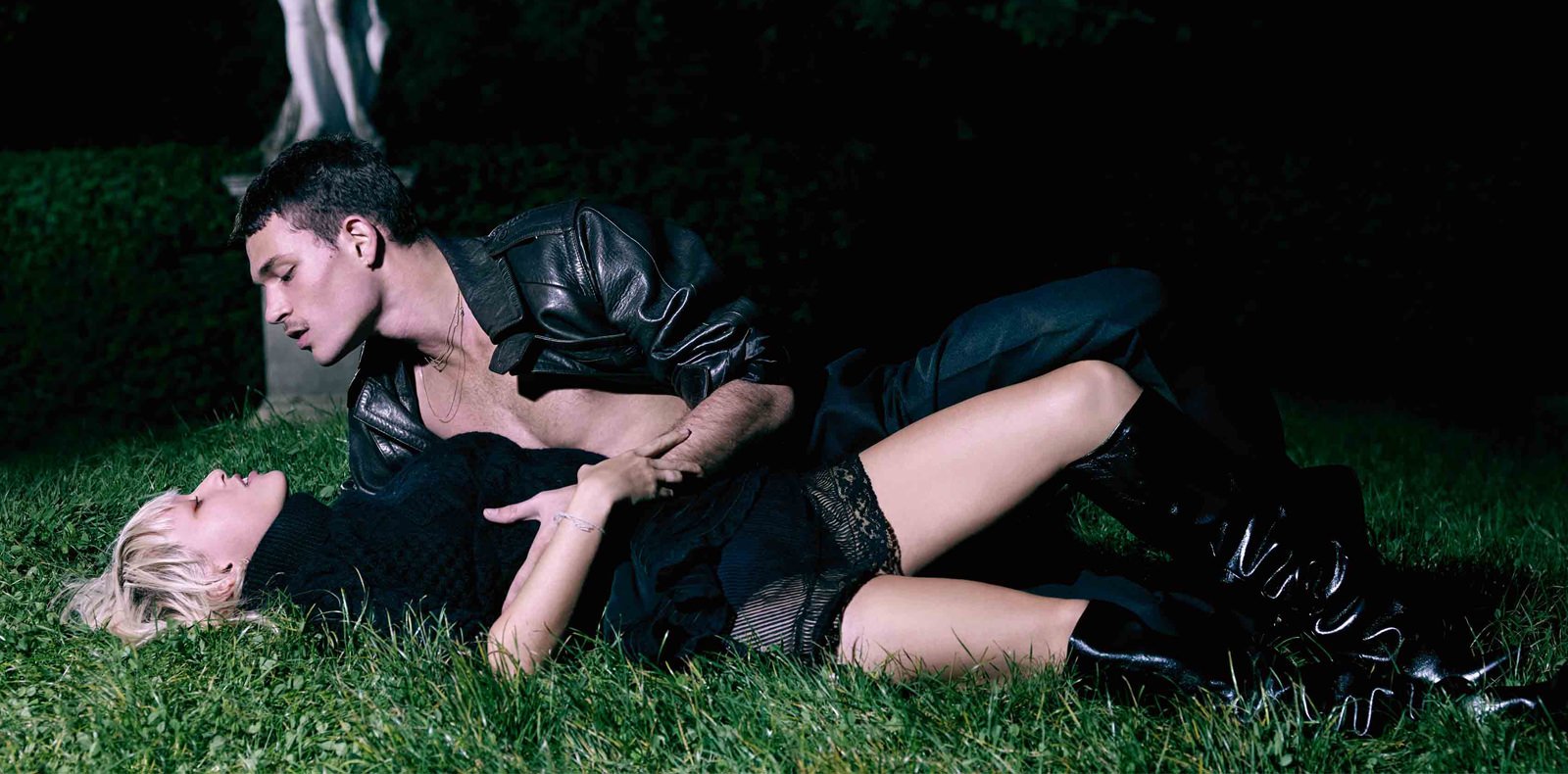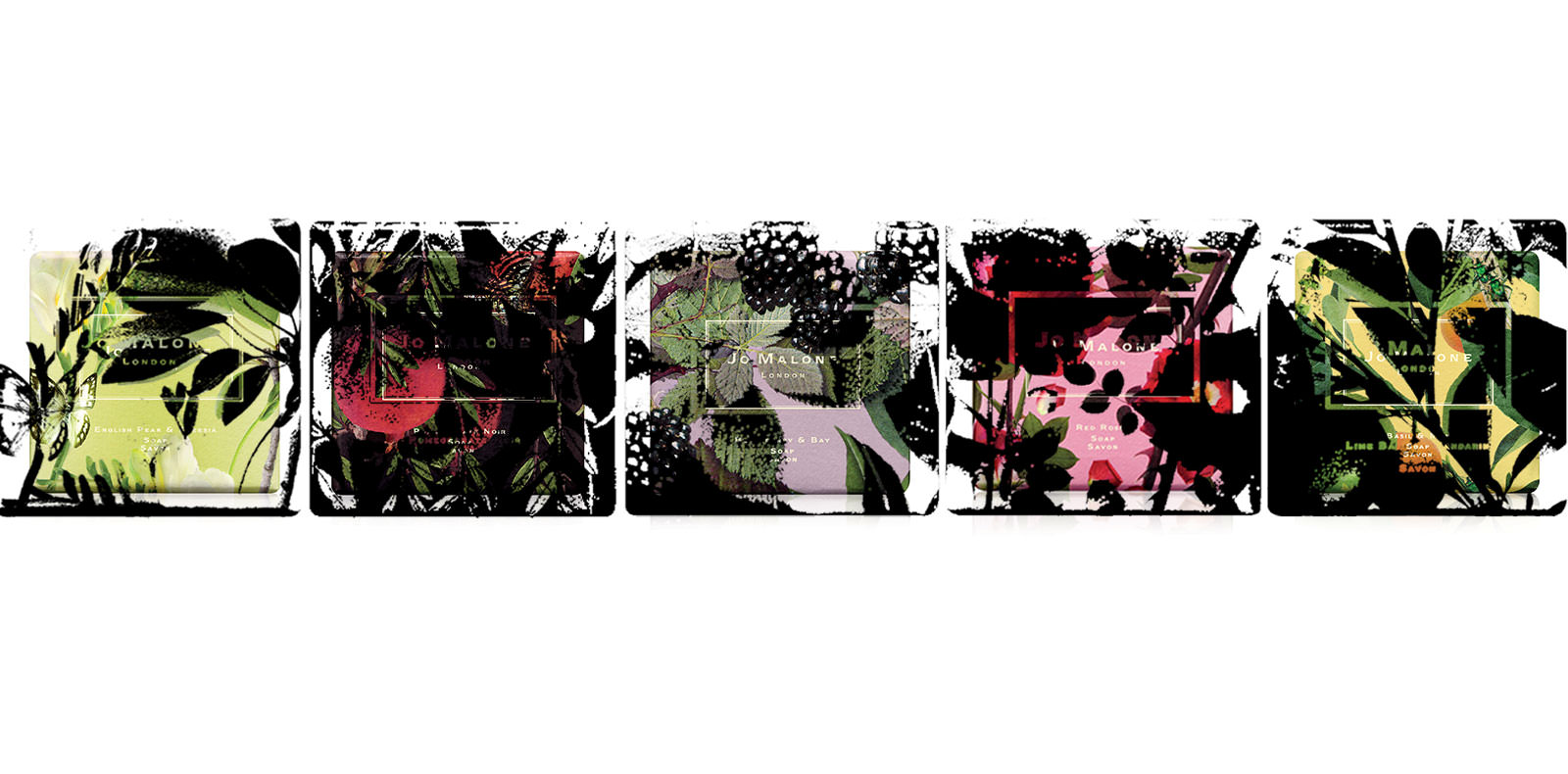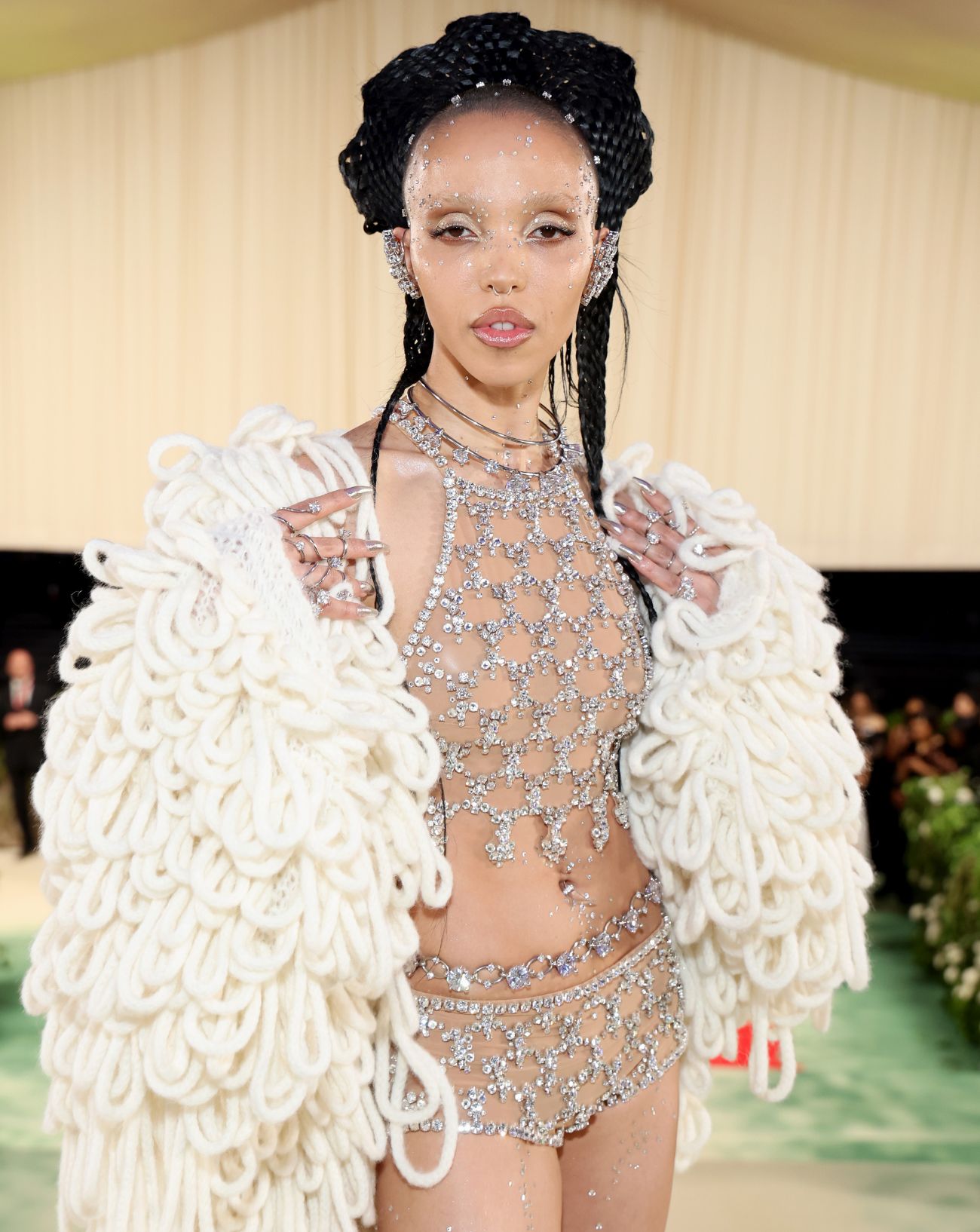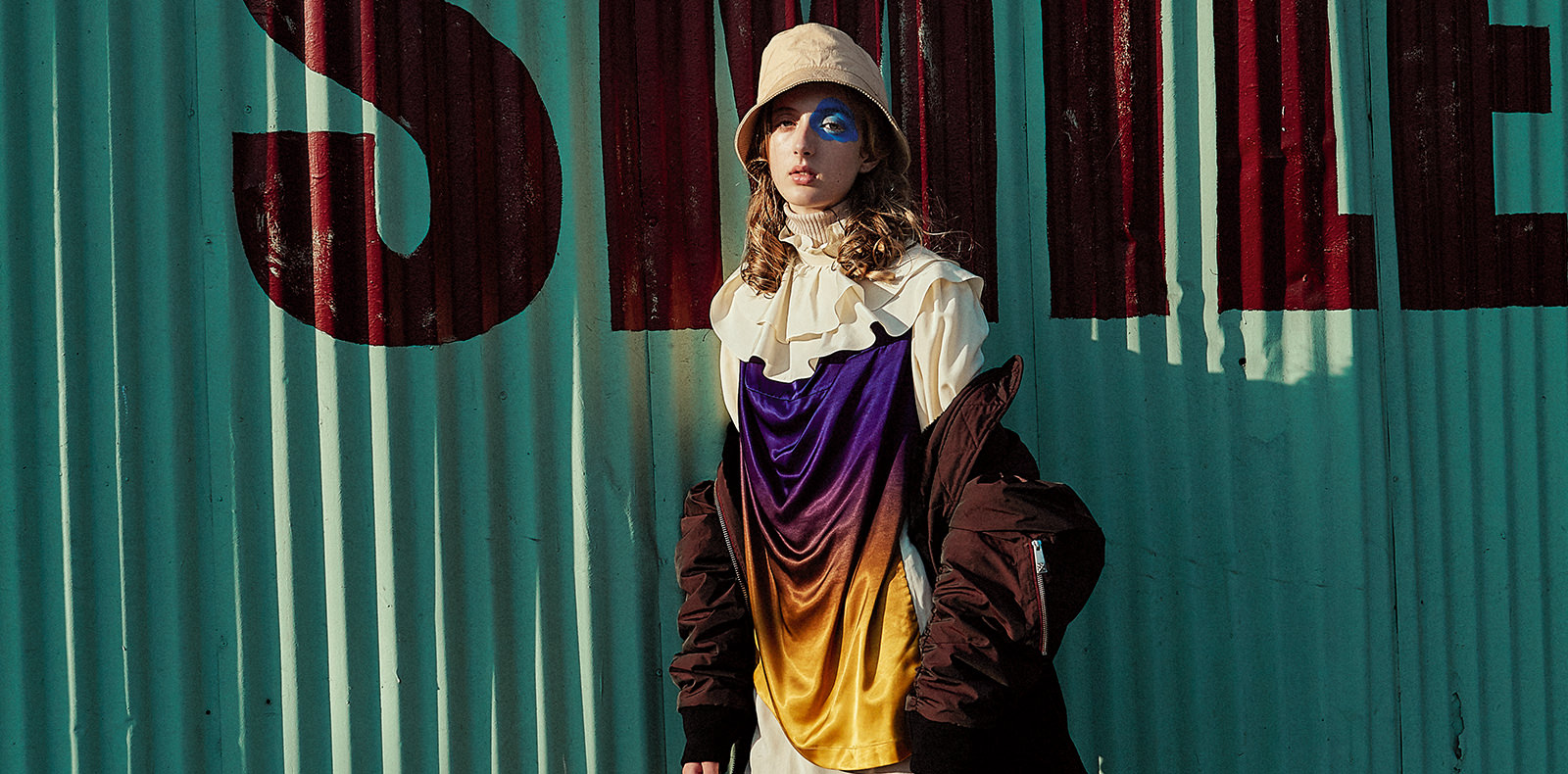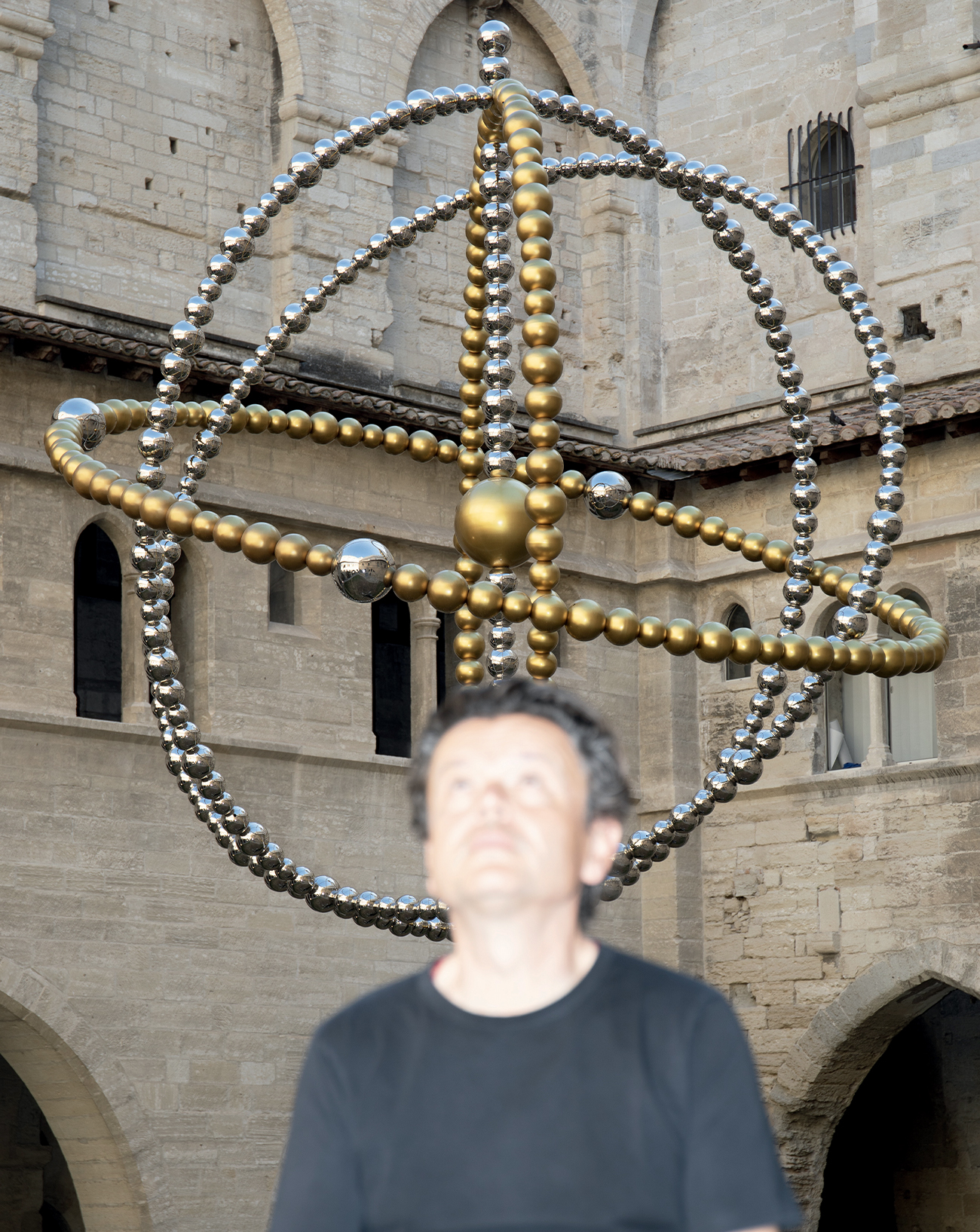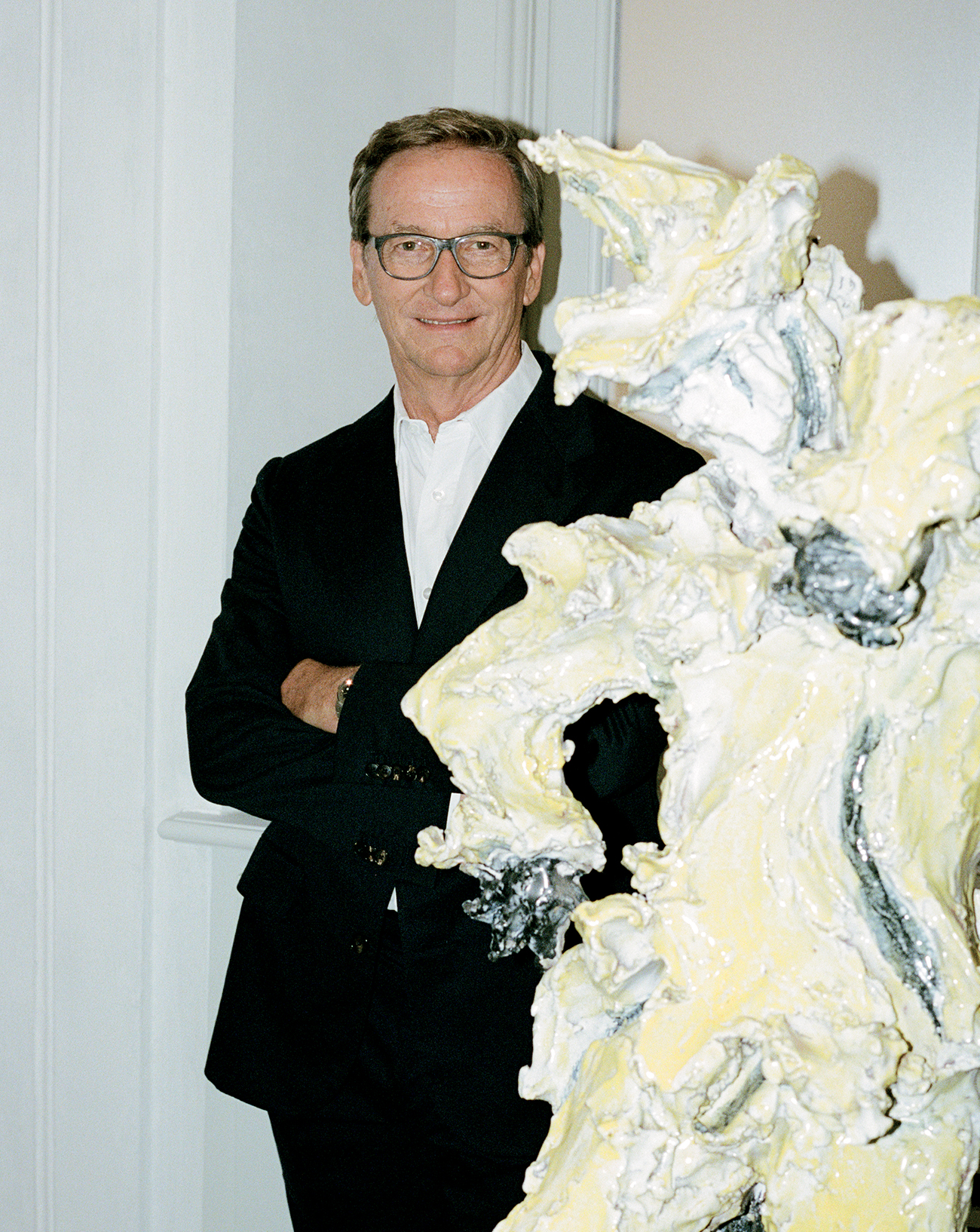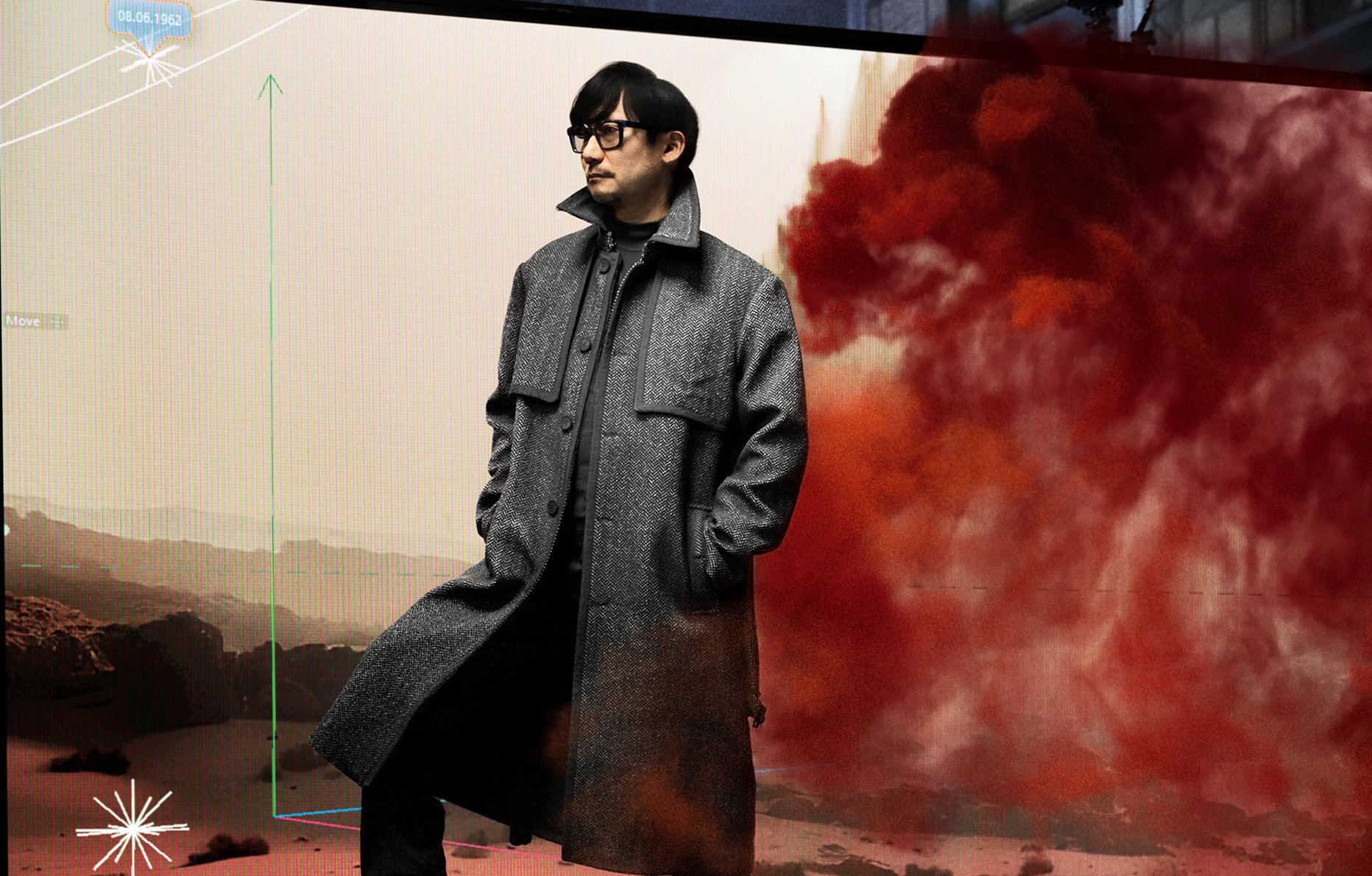
17
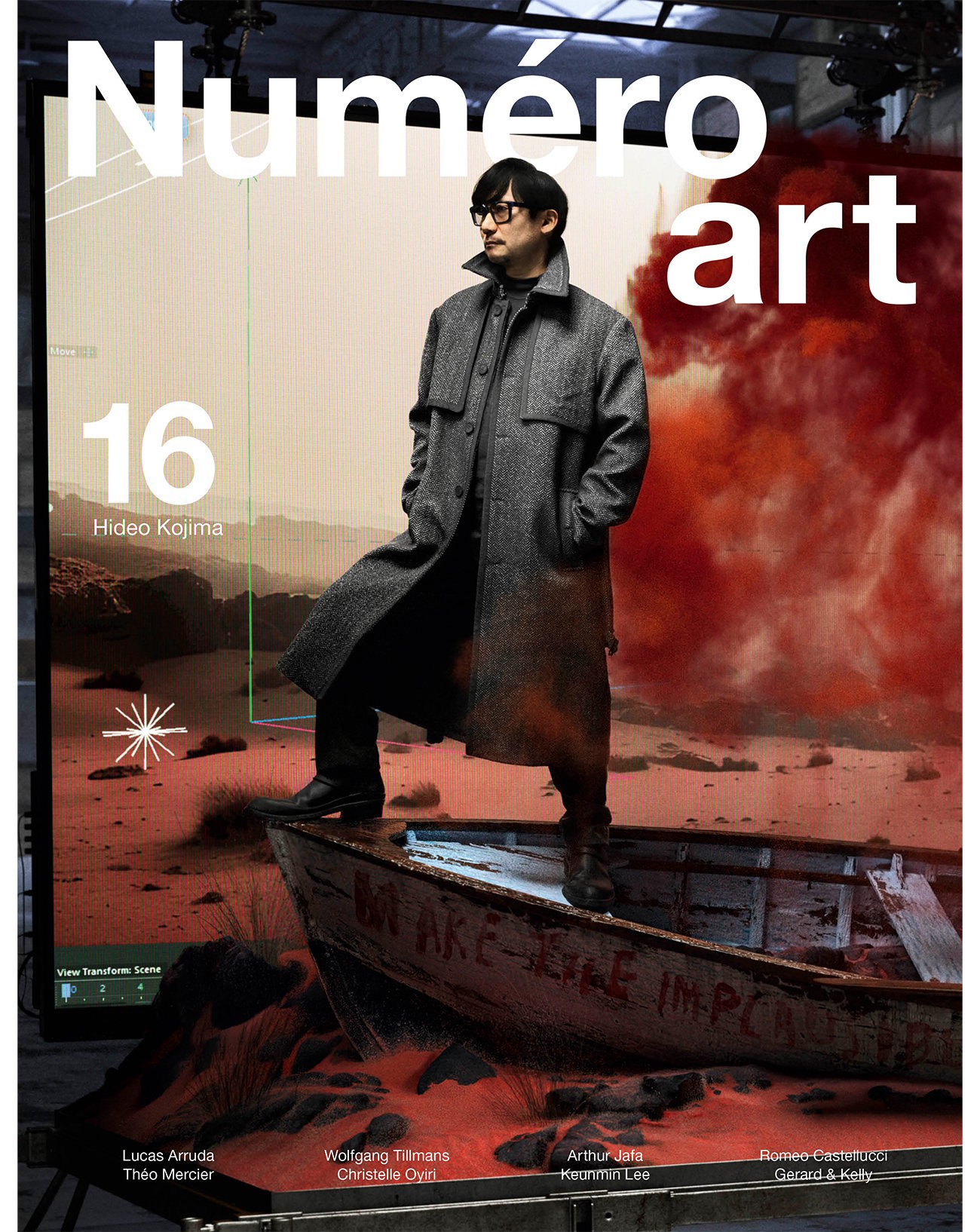
17
Inside Hideo Kojima’s incredible studio, the video game maestro
The creator of Metal Gear Solid and Death Stranding, Hideo Kojima has revolutionized video games and delivered some of the industry’s greatest successes. Just a few months ahead of the release of Death Stranding 2, the founder of Kojima Productions struck the pose for an exclusive photoshoot with artist Frederik Heyman and welcomed Numéro art in his mind-blowing studio in Tokyo. Interview.
Portraits by Frederik Heyman ,
Text by Vincent Jolly ,
Styling by Samuel François.
Published on 17 May 2025. Updated on 11 July 2025.
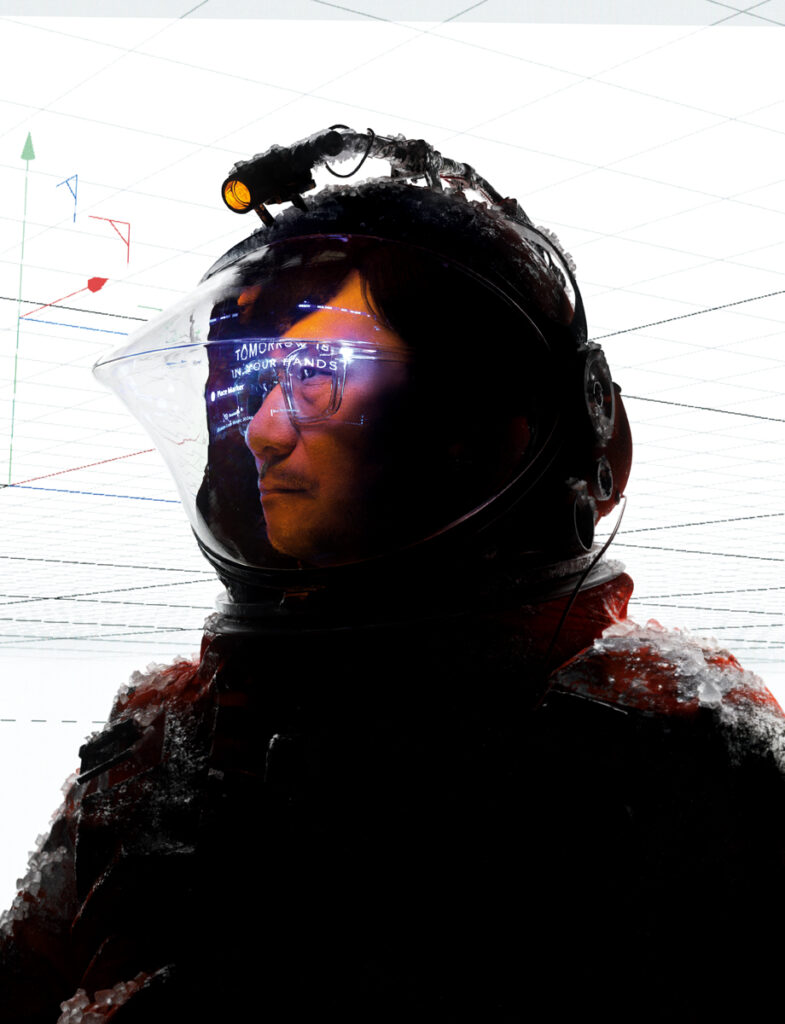
Hideo Kojima opens the doors of his incredible studio
Nothing in the anonymous glass facade of 1 chome-2-70 Konan, in Tokyo‘s Shinagawa district, suggests what lies inside. After climbing a few steps to reception, where a security guard paces up and down, we spot our first clue: the reduced-size model of a Ludens, a steampunk cosmonaut in a white spacesuit whose glass-fronted helmet allows a glimpse of a man’s head in a black balaclava marked with a skull. This is the mascot of Kojima Productions, whose headquarters we are about to enter – exclusively – for Numéro art.
Few are those who get to use this elevator, which takes us up to a maze of hushed corridors. The walls and the thick carpet are black. All is silent, the noisy capital far behind us. A few meters further on, we find ourselves in front of a mirror. Puzzled but curious, like Alice, we hear a “beep.” Our reflection slides back; we are now on the other side of the looking glass. The blinding light from the room we have entered makes us screw up our eyes.
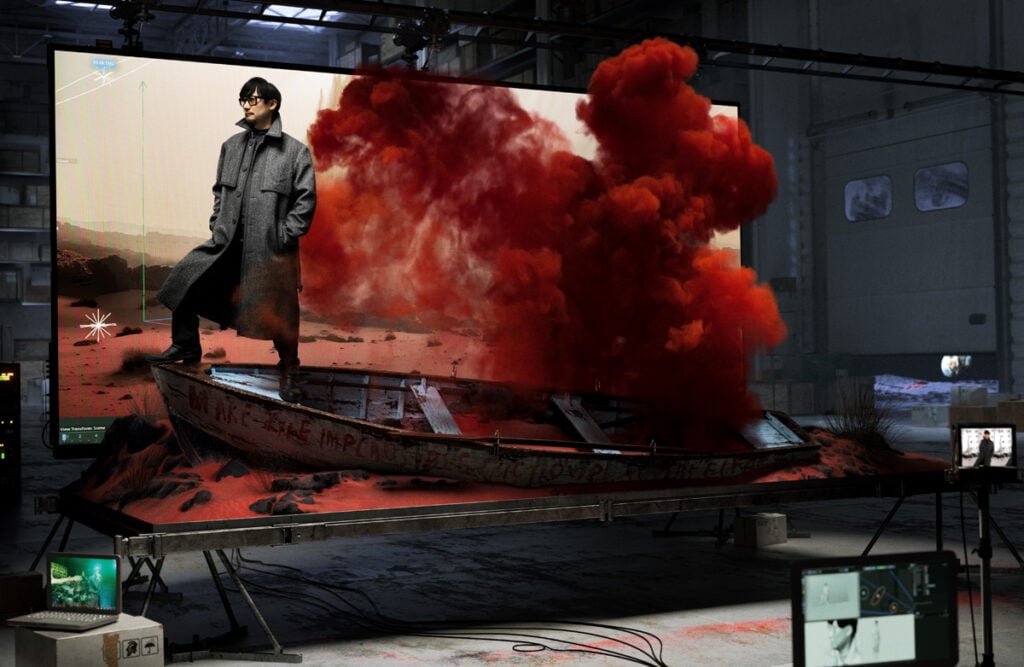
Kojima Productions, a sanctuary in the heart of Tokyo
Everything here is white. On either side, floor-to-ceiling mirrors create a sense of infinity. A life-size Ludens dominates the room, like a sphinx glaring at the profane as they prepare to enter the temple. Every Kojima Productions’ guest must go through this initiation rite, and all will see their own references in the experience: Alice in Wonderland, The Matrix, 2001: A Space Odyssey, The Chronicles of Narnia, or even Severance. The principle is always the same: the master of the domain requires his visitors to purge themselves of the outside world before they enter. Now that we’ve swallowed the red pill, we may proceed into the sanctuary.
The appointment is not for another hour, but he has already come to greet us. As is often the case, he went to bed at 2:00 am the night before. He admits he stayed up to watch Jaws, “but in 4K,” he adds. “And tonight I might watch 2001: A Space Odyssey. When I’m feeling a bit down, I like to watch great movies. They energize me.” Like many of us, Hideo Kojima regularly returns to his favorite films, which seems paradoxical for someone who is “terrified of dying before I’ve seen everything.” But he evidently finds solace in rewatching a cherished movie or series after a tough day. In this respect, Kojima is just like anyone else, but only in this respect…
Like the building in which he works, nothing about the
61-year-old’s appearance hints at the crazy worlds that are born in his brilliant mind. Still waters run deep as they say. His classmates and teachers in Kansai probably saw only a sensitive child, traumatized by his father’s early death, who sought comfort in books, films, and solitude.
In the late 1980s, his colleagues at the video-game giant Konami are unlikely to have guessed that this young project manager, who proposed between 200 and 300 ideas a day, was dreaming up post-apocalyptic worlds in which biomechanical creatures, capable of changing the course of history, would be hunted by genetically modified elite soldiers against a backdrop of wars in which machines had become human, or scenarious where human fetuses carried in portable incubators would act as “bridge babies” between the land of the living and the world of the dead. Astonishing visions such as these would go on to provide tens of millions of players with some of their fondest memories as gamers.
Hideo Kojima, a video game maestro
Try to imagine a ten-year-old’s bedroom lit only by the light of a television on a school night in 1998. On the screen, the video game Metal Gear Solid, released that year, pits the child against a seemingly unbeatable enemy. No YouTube tutorials or web searches are available to seek solutions. Imagine the joy, satisfaction, and excitement of those who correctly guessed that they had to switch the (wired!) handset from port 1 to port 2 in order to keep control of their avatar and solve the mystery.
There you have the essence of Kojima’s games: a pioneering grammar, ahead of its time, that draws on every aspect of a medium in which he excels. Onto his unique and revolutionary structures, he built mythologies that captivated gamers the world over and defined the Zeitgeist for entire generations.
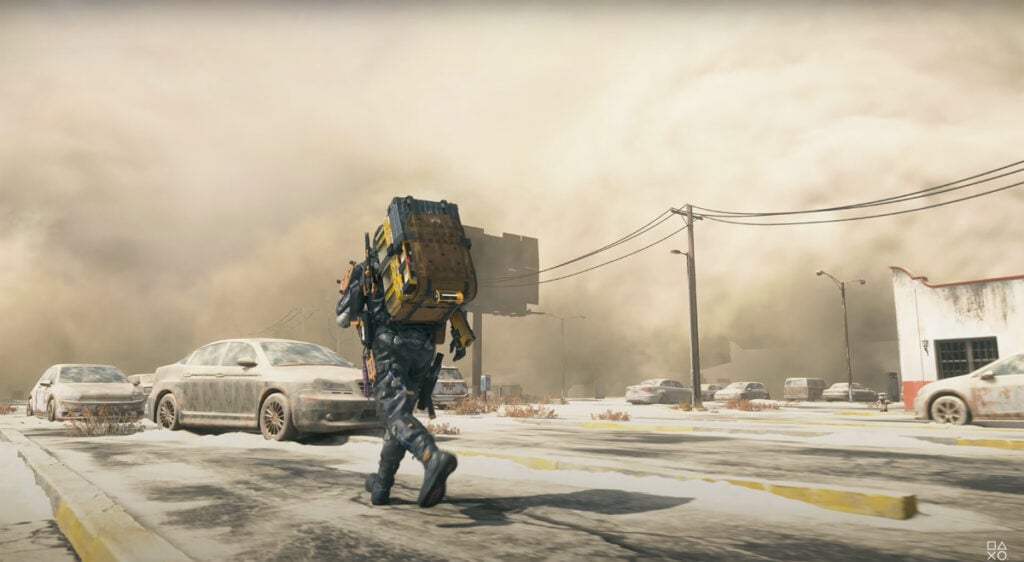
Prestigious fans from Guillermo del Toro to Mads Mikkelsen
The man behind the myth sits down opposite us and sets his coffee on the table. To keep the drink hot and protect it from saliva droplets, the cup is covered with a pink plastic cap marked with a Chiikawa (a kawaii character from a best-selling manga), an object that is both practical and indispensable, like everything in Japan. As always, Kojima is accompanied by his inner circle, those who have remained loyal since the early days: Miki Suga, Ayako Terashima, Cécile Caminades, and Akiyoshi Saito, who also acts as his interpreter.
On the cafeteria walls, large black panels are dotted with messages from visitors – actors, directors, and musicians – signed by names such as Mads Mikkelsen, Guillermo del Toro, Norman Reedus, Nicolas Winding Refn, Nicolas Cage, and others just as famous who we are asked not to mention since the projects they were involved in have either been dropped or are still confidential. It soon becomes clear that Kojima’s studio is an essential destination for any artist visiting Tokyo.
Metal Gear Solid: a genre-defying action game
Over the past four decades, he has established himself as one of the rare “auteurs” in the gaming industry, which is to say that he designs and curates absolutely everything the player experiences. For 1998’s Metal Gear Solid, he was the scriptwriter, director, producer, and designer, overseeing every aspect right down to the music. With that particular release, he set new standards and broke with conventions: presented as an action game in which you play a special-forces operative, it actually requires you to go unnoticed and – ideally – to kill almost no one.
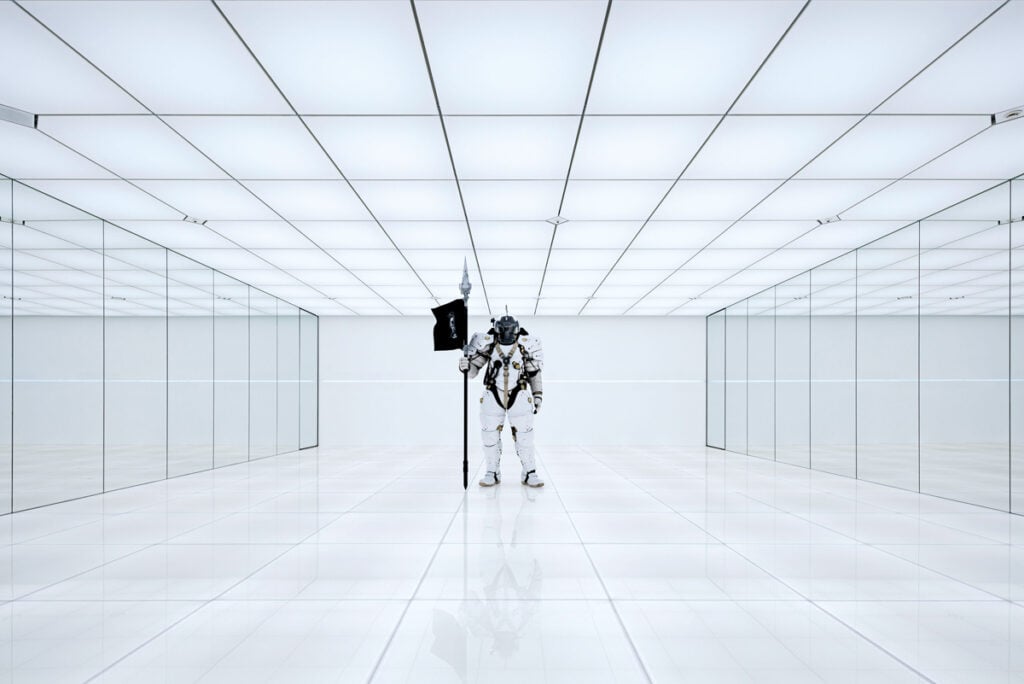
Death Stranding, a franchise with colossal success
In his latest franchise, Death Stranding, whose first instalment he released in 2019, the scene is rather different: in a disconnected world, you play a courier who must walk and connect point A to point B. Boring? Only if you focus on that aspect without examining the rest (like seeing Mario merely as a plumber who travels through pipes by jumping on mushrooms). Such worlds only make sense if you experience them as a player – immersing yourself in Sam Porter Bridges’s life as a courier is to feel the isolation, the exhilaration of the great outdoors, and a whole spectrum of emotions inherent in the story that Kojima seeks to tell.
Shrewdly prefiguring the COVID era, the game has captivated over 20 million players worldwide in the five years since it came out. The sequel, Death Stranding 2: On the Beach, is due for release soon. “In the first episode, you had to reconnect an isolated world. In the sequel, I ask whether we should really have reconnected,” Kojima explains between sips of coffee.
“For me, all artists create a masterpiece at 35” Hideo Kojima
We ask him if he’s not a bit too old to continue making video games, which, according to popular opinion, are a hobby for young people. “Not at all!” he exclaims. “Look at Ridley Scott: he made Gladiator when he was 62. George Miller directed Mad Max: Fury Road at 70. And Hayao Miyazaki released Spirited Away at 60. He still hasn’t retired even though he’s 84! Maybe one day I’ll win the record for the oldest video-game creator.”
After focusing on Death Stranding for the past decade, he recently announced several new projects: OD, a horror game he has developed with help from Jordan Peele (the director and screenwriter of the Oscar-winning Get Out), and Physint, a return to action-espionage. Like the basketballer Michael Jordan, who took a break to take up baseball, or Guns N’ Roses, who waited 15 years to release Chinese Democracy, Kojima needed to explore other horizons to broaden his creative scope.
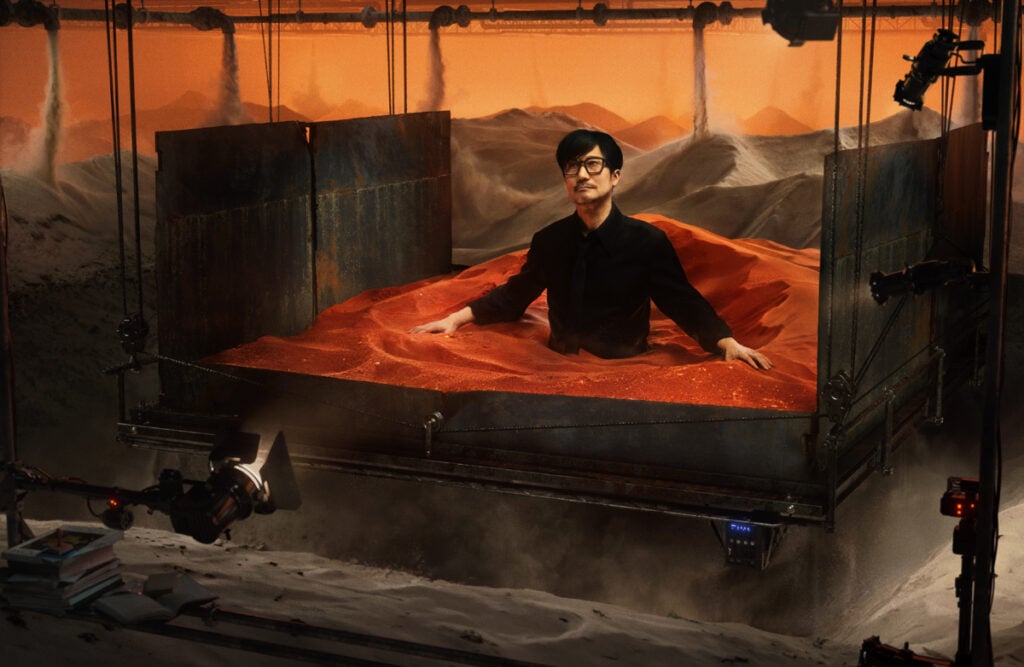
“For me, all artists create a masterpiece at 35,” he asserts. “After that, it’s a question of whether you stay the course and grow or whether you go downhill.” At 35, Kojima released Metal Gear Solid; George Miller was 34 when he directed the first Mad Max; Hayao Miyazaki was 39 when The Castle of Cagliostro came out; while Ridley Scott took his time to shoot The Duellists, his first feature film, at 40. Like James Cameron – and Miller, for that matter – Kojima has taken advantage of technological progress and bigger budgets to realize his ideas on an ever grander scale. There’s only one rule: keep rules to a minimum.
Are games still games if there are no rules? “Yes. When I started in the business, anything could become a game. Now, studios or producers will only fund you if you agree to make a game that ticks pre-established boxes.” He refers to the preconceptions that surreptitiously weave their way into our minds – “If you watch 500 Hollywood films, you’ll start to understand the rules that define the genre” – and lead us to embrace uniformity, conventionality, and mimicry. “I keep telling my teams: ‘There are no rules.’”
The risky bet of independence
This constant need to blur the lines and mix genres seems to have been at the root of his split with Konami, for whom he developed the Metal Gear franchise until 2015. In one of the industry’s rare coups de théâtre, he quit and announced that he would set up his own studio. In the opinion of almost everyone around him, he’d lost his mind. “Even my family told me I was crazy to leave my job and become independent at 52!”
Though the rest is history, he is very aware that it wasn’t a sure thing. “That’s why I hate hearing people say that you shouldn’t be afraid of making mistakes. Of course you should! A mistake can be really serious – it can ruin a career.” At the time, he was going through a period of soul-searching, and remembers a discussion he had with his friend Guillermo del Toro. “I asked him what I should do. He replied: ‘Keep creating like you’ve always done, but do something new.’”
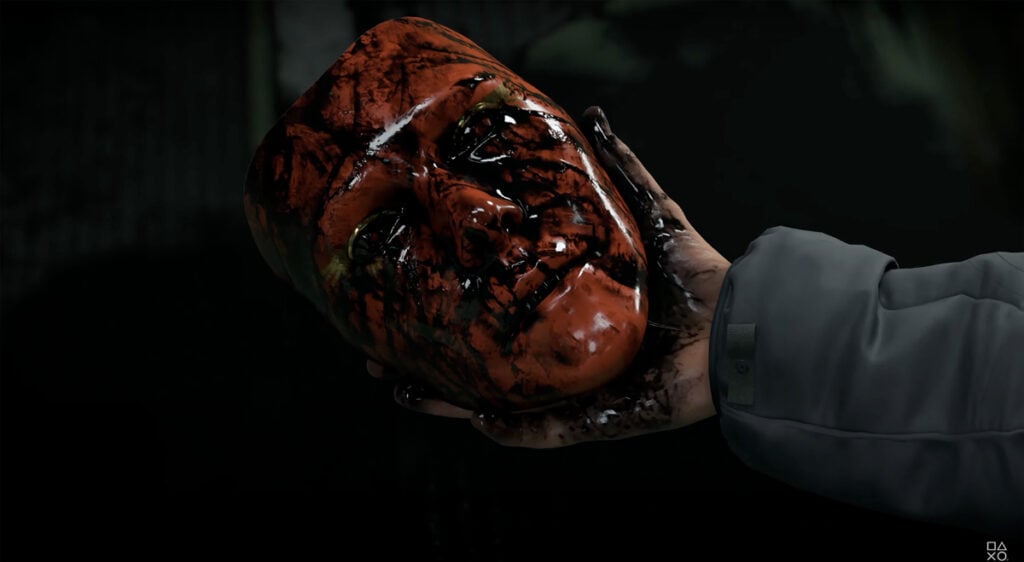
It is difficult, if not impossible, for the uninitiated to imagine the workload involved in developing a product on the scale of Death Stranding or a triple-A-rated game. Production involves hundreds of people over a period of several years: concept artists, character artists, environment artists, animators, programmers, game and level designers, sound engineers, cinematographers, composers, sound designers, bug hunters, and so on. All work under the guidance of the production and project-management teams, who ensure that the constantly evolving pieces fit seamlessly together.
Passionate collaborators from Yoji Shinkawa to Woodkid
In his role as an auteur, Kojima is responsible for all these aspects at once, although he never fails to praise the indispensable input of his team members, who manage to turn his offbeat ideas into reality. Among them, the artist Yoji Shinkawa has been in charge of all the concept art and illustrations for Kojima’s games since the very beginning, with a graphic style whose lineage includes a dash of Enki Bilal and Mœbius.
More recently, Kojima befriended the musician Yoann Lemoine, aka Woodkid, who he met before the pandemic. In the director’s cut of Death Stranding, Kojima included songs by Lemoine, who recently joined him on stage at South by South West (SXSW) in Austin to unveil the new trailer for Death Stranding 2, which features To the Wilder, an original song by the artist. “Hideo asked me to spend a few days in Tokyo to write a track,” Lemoine explains. “I ended up spending several weeks in an office, drawing inspiration from the mythology of Death Stranding.” During this time, he discovered Kojima’s creative process, which includes a sports session every morning in a gym located between the meeting and mixing rooms.
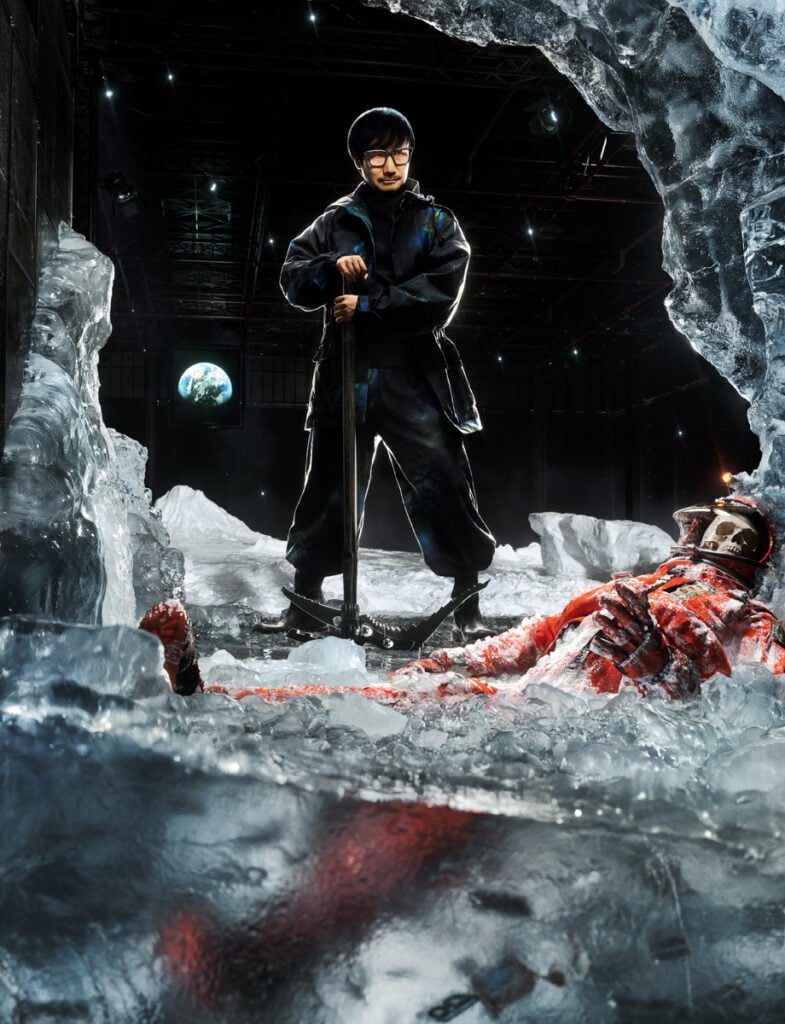
Indeed, when asked, Kojima is very open about his daily routine. The first thing he does in the morning? “Social media,” says the man with a strong presence on X and Instagram, where he regularly posts about the tracks he has discovered or the A-list celebrities he has met. “Actually that’s not true, I do my emails first,” he continues, explaining that he takes audio notes of what he sees, reads, and listens to.
A hard-working creator
This aptitude for both detail and synthesis allows him to take ownership of every aspect of his creations, including communications materials such as trailers. “In many video-game companies, the trailers are outsourced,” he explains. “They’re made by people who have never actually played the game and who just want to satisfy the vision of the executives or the shareholders. Whereas the creatives should always have the final say.”
He tells us that he is constantly editing in his mind. “When I listen to the music, I know exactly what I want, which image at what moment. I write it down so that the team can follow.” Ayako shows us one of the famous e-mails in which a text is marked up with all sorts of annotations. “I avoid sending these at 2:00 am… But I think about work from dawn to dusk. Even when I’m on holiday. My family hates me for it. It’s like a disease. I don’t have an off button.” How do you sort through all those ideas? “In my mind, there’s a constant Darwinian clash between them, until the strongest idea wins.”
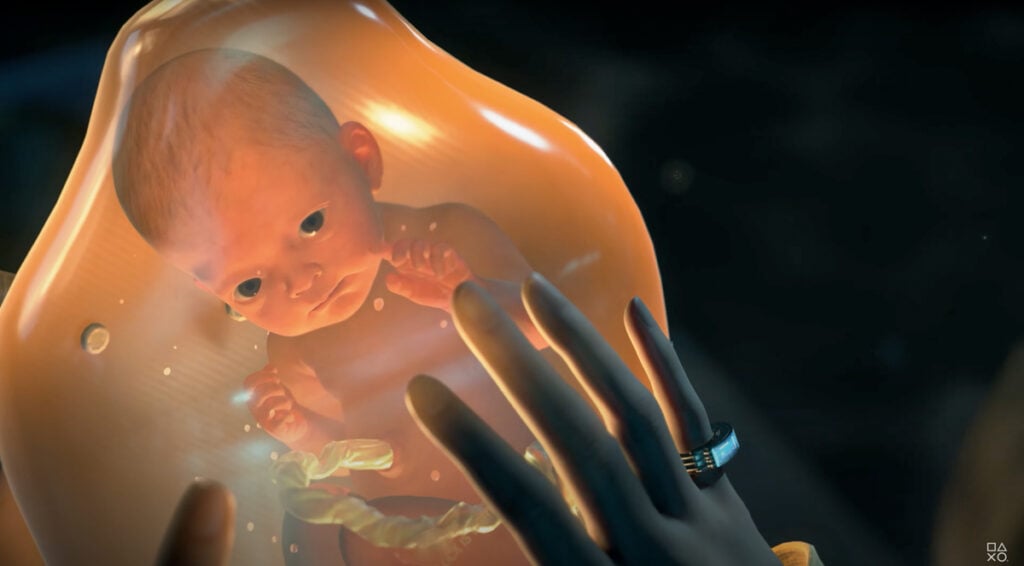
The highly anticipated release of Death Stranding 2
Death Stranding 2 will be released on June 26th. Artists know that there’s nothing more dangerous than following in the footsteps of a bestseller, while the public knows how risky sequels can be. Is he afraid of not achieving the same success? “Obviously, when I make a video game, I want as many people as possible to play it. Like with a painting, I place some of my ego in these games. But how do you measure success?” he continues. “Look at Blade Runner. The reviews were terrible when it first came out and now there’s almost a cult around the movie and around how it reinvented the genre of science fiction.”
Our discussion must come to an end, and Kojima must return to conducting his orchestra. “You know, when I visit a bookshop or a museum, I realize that most masterpieces were made by people who were broke or unloved in their day…” That is definitely not his case, though: the sheer scale, ingenuity, and daring on display in the trailer for Death Stranding 2 demonstrate that, at 61, Kojima is just as sharp as ever.
The millions of views and comments testify to the public’s continuing enthusiasm. As with the avant-garde pacifist discourse that underscored the Metal Gear Solid series, the issues raised by Death Stranding 2 promise to question the world we live in. The images of Sam Porter Bridges wandering through environments ravaged by ever-more-violent weather incidents reflect today’s climate deregulation, while the automation of deliveries and the pitfalls of over-connection resonate with our everyday predicaments. Rarely has a film, a book, a painting, or a video game changed the world, but like all works of art they help us to see the color in increasingly gray times, to exorcise misfortune and chase away fear, to continue, in the words of the character played by Léa Seydoux in this second opus, to build “a barrier to evil and a bridge to good.”
Kojima Productions, Death Stranding 2: On the Beach, released for PlayStation 5 on June 25th.
